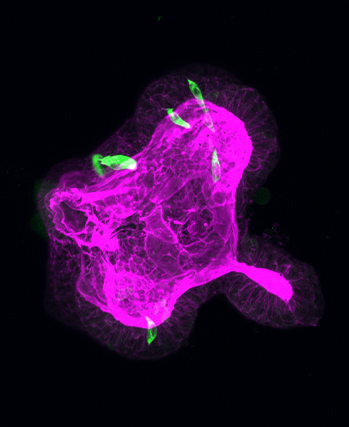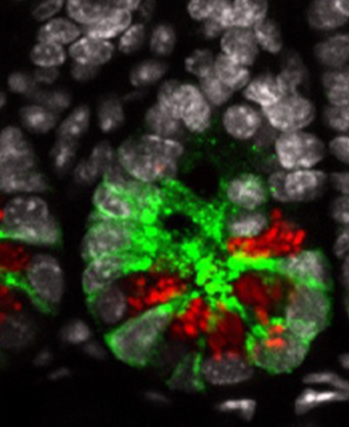Mitochondria are increasingly recognized as key regulators of immune cell function, but it is unclear how their reprogramming contributes to pathogen specific responses. Using a combination of immunological and biochemical techniques, this study investigated the potential role of the transcription factor hypoxia-inducible factor-1α (HIF-1α) in driving inflammatory cytokine production in antiviral immune responses. This transcription factor has been shown to regulate mitochondrial function, oxygen consumption and substrate choices to support energy metabolism We found several mechanisms, including mitochondrial reactive oxygen species, contribute to the stabilization of HIF-1α in macrophages activated by viral ligands. This stabilization results in the accumulation of HIF-1α, which plays a central role in amplifying inflammatory cytokine production. Further, we found this amplification occurs independently of HIF’s transcriptional activity and instead was associated with the ability of HIF-1α to directly modulate NF-κB activity. This study shows for the first time that HIF-1α serves to fine tune the level of inflammatory cytokine production independently of its transcriptional activity during antiviral immune responses and that it may act to drive differential responses to varying tissue microenvironments. It also suggests that HIF-1α and the proteins/molecules that stabilize its accumulation may represent potential targets to reduce potentially damaging inflammation during chronic viral infections or in other contexts where antiviral immune responses become chronically activated.
Understanding how the mitochondria fine tunes pathogen specific responses.
Research Area: Biochemistry, Cell Biology, Disease Biology
https://doi.org/10.4049/jimmunol.2001282
Authors: Duale Ahmed, Allan Humphrey, David Roy, Mary-Elizabeth Sheridan, Zoya Versey, Allison Jaworski, Alex Edwards, James Donner, Alfonso Abizaid, William Willmore, Ashok Kumar, Ashkan Golshani and Edana Cassol
Related Articles

Publication
BMP signaling in the intestinal epithelium drives a critical feedback loop to restrain IL-13-driven tuft cell hyperplasia
Although Helminth infections are prevalent throughout the world, they are particular a health...

Publication
LSD1 represses a neonatal/reparative gene program in adult intestinal epithelium
After birth, the epithelium that lines our gut transitions (or matures) so that it can deal...
Publication
Targeting mRNA binding proteins to respond to stress responses
The paper establishes the phosphorylation of heterogeneous nuclear ribonucleoprotein A1...